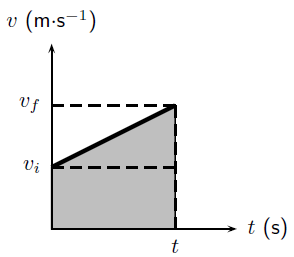| << Chapter < Page | Chapter >> Page > |
In this chapter we will look at the third way to describe motion. We have looked at describing motion in terms of graphs and words. In this section we examine equations that can be used to describe motion.
This section is about solving problems relating to uniformly accelerated motion. In other words, motion at constant acceleration.
The following are the variables that will be used in this section:
The questions can vary a lot, but the following method for answering them will always work. Use this when attempting a question that involves motion with constant acceleration. You need any three known quantities ( , , , or ) to be able to calculate the fourth one.
Galileo Galilei of Pisa, Italy, was the first to determined the correct mathematical law foracceleration: the total distance covered, starting from rest, is proportional to the square of the time. He also concluded thatobjects retain their velocity unless a force – often friction – acts upon them, refuting the accepted Aristotelian hypothesis thatobjects "naturally" slow down and stop unless a force acts upon them. This principle was incorporated into Newton's laws of motion(1st law).
The following does not form part of the syllabus and can be considered additional information.
According to the definition of acceleration:
where is the change in velocity, i.e. - . Thus we have
We have seen that displacement can be calculated from the area under a velocity vs. time graph. For uniformly accelerated motion the most complicated velocity vs. time graph we can have is a straight line. Look at the graph below - it represents an object with a starting velocity of , accelerating to a final velocity over a total time .

To calculate the final displacement we must calculate the area under the graph - this is just the area of the rectangle added to the area of the triangle. This portion of the graph has been shaded for clarity.
This equation is simply derived by eliminating the final velocity in [link] . Remembering from [link] that
then [link] becomes
This equation is just derived by eliminating the time variable in the above equation. From [link] we know
Substituting this into [link] gives
This gives us the final velocity in terms of the initial velocity, acceleration and displacement and is independent of the time variable.

Notification Switch
Would you like to follow the 'Siyavula textbooks: grade 10 physical science [caps]' conversation and receive update notifications?